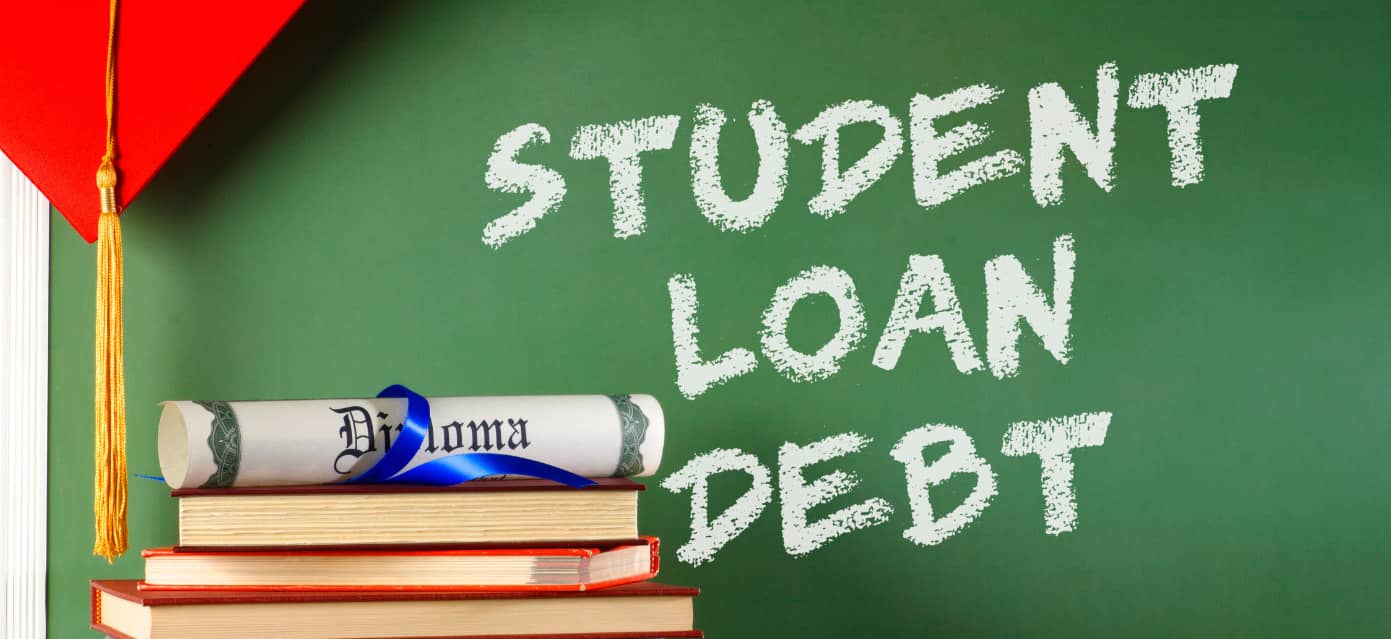
Everything a student needs to know about the new federal loan forgiveness or debt cancellations which was announced in August 2022.
On Aug. 24, 2022, President Biden announced his administration approved and is moving forward with forgiveness of billions of dollars of federal student loans.
Federal student loan repayments have been on pause since the onset of the pandemic in March of 2020. That pause was set to expire on Aug. 31, 2022. However, the President’s new plan also extends the pause on those repayments to the end of 2022. During that time (March 13, 2020 – Dec. 31, 2022) student loan interest rates were set at zero percent, so anyone who continued to make payments did not pay any interest.
After months of national news coverage on the topic, this recent announcement can be confusing and lead to questions. Some previously proposed plans that were not approved would have forgiven federal student loan amounts up to as much as $50,000 per borrower. The approved plan will cancel smaller federal student loan amounts up to $20,000.
Who qualifies for the new federal student loan debt cancellation plan?
- Anyone with $10,000 or less in federal student loan debt, who earned $125,000 or less as an individual or $250,000 or less jointly on their 2020 or 2021 federal tax return.
- Anyone with $20,000 or less of federal student loan debt who received a Pell Grant and earned $125,000 or less as an individual or $250,000 or less jointly on their 2020 or 2021 federal tax return.
- The debt cancellation program does not apply to any private loans such as those from a bank or credit union.
- The White House said borrowers who took out federal loans by June 30 of this year (2022) are eligible for forgiveness. Loans taken out after that date won’t be eligible.
In addition to the loan debt cancellation, individuals with federal student loans in excess of $10,000 or those who received Pell Grants and have loans in excess of $20,000, will have their loan balance reduced and their payments will be capped at 5% of their monthly income if they are in an income-driven repayment plan.
How many people are affected?
According to the U.S. Department of Education, the plan could affect up to 43 million borrowers, and may cancel the full remaining balance for approximately 18 million borrowers. About eight million borrowers could get automatic relief because the department already has their income data. It is estimated nearly 90% of debt cancellation will go to borrowers who earn less than $75,000 a year.
Are there income tax implications?
Individuals with debt cancellation amounts under the program will not be subject to federal income taxes thanks to the American Rescue Plan. However, some state’s income tax rules may vary. While many states will follow the federal guidelines, it is always good to check with a tax expert.
How will borrowers apply?
The U.S. Department of Education has been tasked with setting up a simple application process for borrowers to claim relief. The Department indicates an application will be made available in early October of 2022 and anticipates four to six weeks turnaround time once an application has been submitted. Although borrowers will have a full year to submit their application, the Department also suggests borrowers apply by Nov. 15, 2022, in order to receive debt cancellation in time for the Jan. 2023 loan repayment restart. Borrowers can sign up to be notified when this information is available at StudentAid.gov/debtrelief.
Moving forward from here
The price tag of a college education has increased dramatically over the last four decades, even after accounting for inflation, the cost of four-year public or private colleges has nearly tripled since 1980. Federal student aid has not kept pace with these costs causing more students to take look at the pros and cons of student loans. In fact, the Department of Education analysis shows the typical undergraduate student who borrows money for college graduates with nearly $25,000 in debt. Filing for bankruptcy is just one of the myths students sometimes consider when facing a mountain of student loan debt.
In an attempt to combat the problem, the President also recently approved $40 billion to colleges and universities through the American Rescue Plan, which is the biggest increase to the Pell Grant program in over a decade. The money will help students who are struggling the most with the burdens of the cost of college cost.
Current or future college students and their families can also benefit from learning more about the financial aid process and starting early to find the best ways to plan and save for college.
While the tax or legal information provided is based on our understanding of current laws and has been gathered from sources believed to be reliable, it cannot be guaranteed. Federal tax laws are complex and subject to change. Neither LPL Financial, nor its registered representatives, provide tax or legal advice. As with all matters of tax or legal nature, you should consult with your own tax or legal counsel for advice.
Category: Family & Estate
